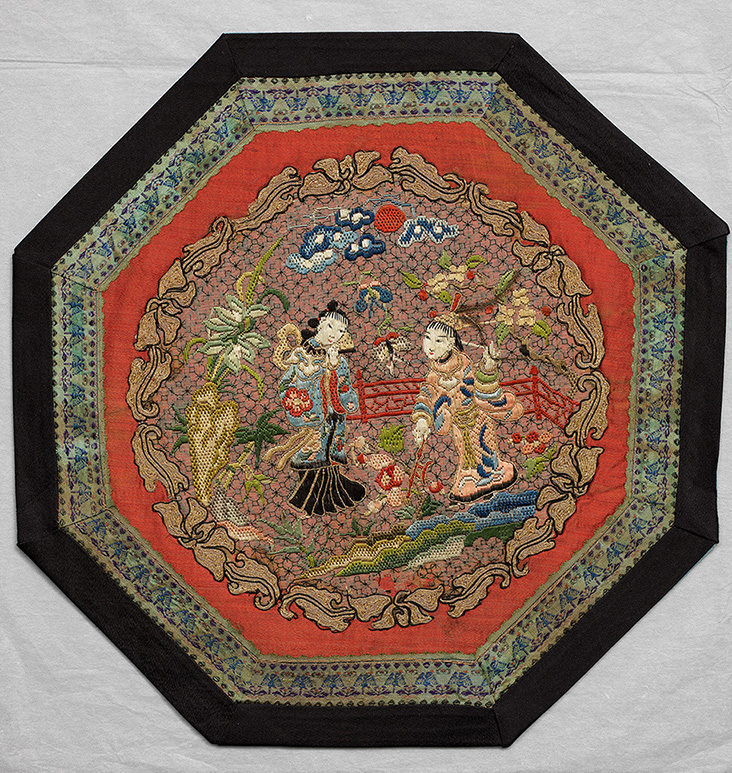Characters in Popular Stories
Many of the later tapestries and embroideries from the Ming and Qing dynasties are civilian productions made in workshops. To meet the demand and tastes in society, there appeared an increasing number of works on narrative subjects ranging from moving stories with legendary allusions to amusing genre and popular drama scenes. These illustrations in silk mainly deal with festive, longevity, and auspicious themes intricately composed and reproduced in lively scenes. Works on display include such popular and familiar stories as "Xie An betting his villa," "Laozi riding an ox," and "Lü Bu flirting with Diaochan." When presented in the rich colors of silk tapestries and embroideries, these subjects become even more engaging.
Lü Bu Flirting with Diaochan
- Anonymous
- Octagonal mounting, plain gold silk gauze embroidery
This work depicts the story of a "honey trap" involving the beauty Diaochan in Romance of the Three Kingdoms . In the late Eastern Han dynasty, Dong Zhuo (?-192) usurped power from the emperor and was the de facto ruler. Minister of the Masses Wang Yun (137-192) used the beauty Diaochan to entrap Lü Bu and seed discord with Dong Zhuo, Lü's foster father. Wang finally succeeded in getting Lü to murder Dong. The work here depicts the scene when Lü Bu and Diaochan meet secretly at Fengyi Pavilion.
In this work of plain gold embroidered on silk gauze, the use of gauze is a technique often found in Suzhou embroidery. The gauze here is stitched tightly in a close-knit arrangement. With mostly gauze and linen, colored silk embroidery threads were used to complete the patterns and leave the gauze around them as the background, the stitching even and orderly. The threads depicting the clothing and surrounding flowers are also embroidered in plain gold, the weaving bright and even with a richly beautiful and majestic decorative effect. This work was donated to the National Palace Museum by Mr. and Mrs. Chi Hsing-fu.

